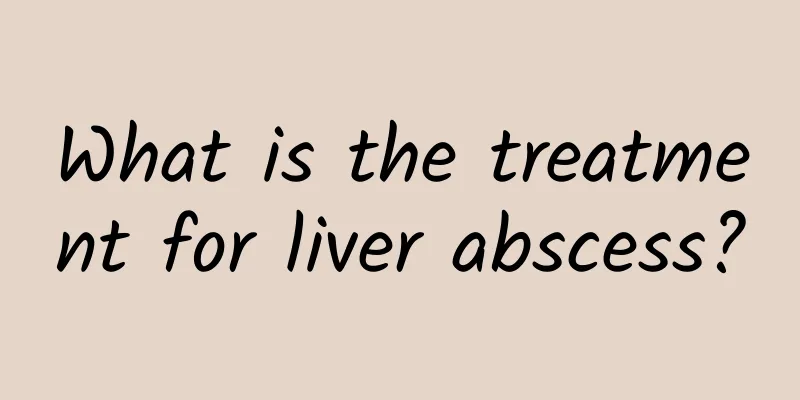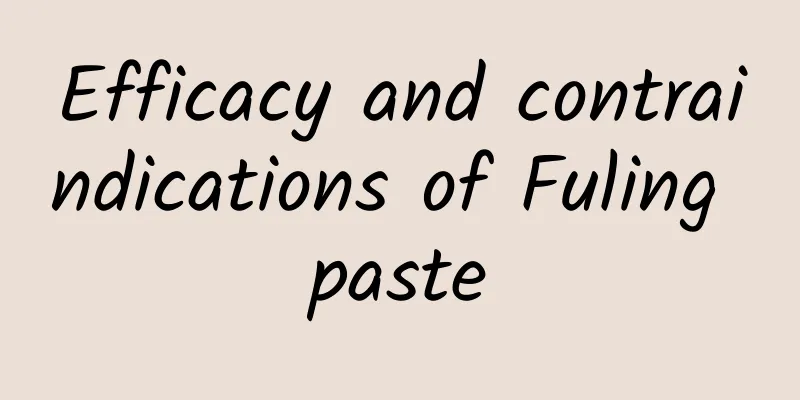What is the treatment for liver abscess?

|
The liver is the largest detoxification organ in the human body, processing toxins in the body all the time, breaking them down into harmless substances and excreting them out of the body. Therefore, the functional role of the liver is very important. In modern life, people's livers bear a greater health pressure, causing many people's livers to suffer from disease problems due to the high pressure. For example, liver abscess is a relatively common symptom, which poses a great threat to people's health. The occurrence of this abscess is closely related to people’s unhealthy living habits. Let’s take a look at how to treat liver abscess. 1. Bacterial liver abscess (1) Antibiotics: For acute localized liver inflammation, when abscesses have not yet formed or when there are multiple small abscesses, active conservative medical treatment should be given. While treating the primary lesion, use high-dose antibiotics and systemic supportive therapy to control inflammation and promote the absorption of inflammation. (2) Antibiotics + percutaneous drainage. While using systemic antibiotics, for a single larger liver abscess, puncture and aspiration of pus can be performed under the guidance of B-ultrasound. After aspirating as much pus as possible, antibiotics can be injected into the abscess cavity. Puncture and aspiration of pus can be repeated every few days. A catheter can also be placed to drain pus. At the same time, the abscess cavity can be flushed and antibiotics can be injected. The drainage tube can be removed after the abscess has shrunk and no pus has been drained out. (3) Antibiotics + surgical drainage For larger liver abscesses that are likely to rupture, or have already ruptured and caused peritonitis, empyema, biliary liver abscess, or chronic liver abscess, surgical incision and drainage of the abscess should be actively performed while systemic antibiotics are being administered. (4) Antibiotics + surgical resection: For patients with chronic thick-walled liver abscesses, patients with liver abscesses that do not collapse after incision and drainage, patients with dead space or sinus tracts that have long-term pus discharge and do not heal, and patients with intrahepatic bile duct stones combined with multiple liver abscesses in the left lateral lobe, and patients whose liver lobes have been severely damaged and have lost their normal functions, liver lobectomy can be performed. 2. Amebic liver abscess, fungal liver abscess In the treatment of amoebic liver abscess and fungal liver abscess, conservative medical treatment is considered first, with systemic use of anti-amoebic and antifungal drugs. Other treatment principles are basically the same as those for bacterial liver abscess. |
<<: What are the methods for treating high uric acid?
>>: What are the treatments for bradycardia?
Recommend
Precautions for hypothyroidism in the elderly
Hypothyroidism is a relatively common disease, es...
How can the elderly with constipation defecate quickly? The folk remedy is effective
As people age, their gastrointestinal function be...
How are moles formed?
I think everyone should be familiar with black mo...
Live oral rotavirus vaccine
There are many types of medicines. Before choosin...
The difference between thread embedding and nano-traceless
Both buried thread surgery and nano-traceless sur...
What causes raised patches on the face?
The quality of facial skin affects the appearance...
Traumatic femoral head necrosis
Speaking of the disease of traumatic femoral head...
Gastric ulcer diet recipes
The stomach is very common in our daily life. Man...
What is the white discharge on both sides of the nose?
Sometimes you will find white secretions on both ...
Stewed Pig's Trotter with Astragalus and Angelica
Pig's trotter stewed with Astragalus and Ange...
What are the medications and meals for cerebral infarction?
Cerebral infarction is a disease that is more lik...
How long is the survival rate for multiple myeloma?
Many patients with multiple myeloma are extremely...
No matter what age you are, practicing this exercise will have amazing results
Anyone can practice double-cross-legged sitting, ...
What should I do if I have facial paralysis?
If many people have symptoms of facial paralysis ...
What causes astringent sensation in the mouth?
Sometimes we feel astringency and bitterness in o...









